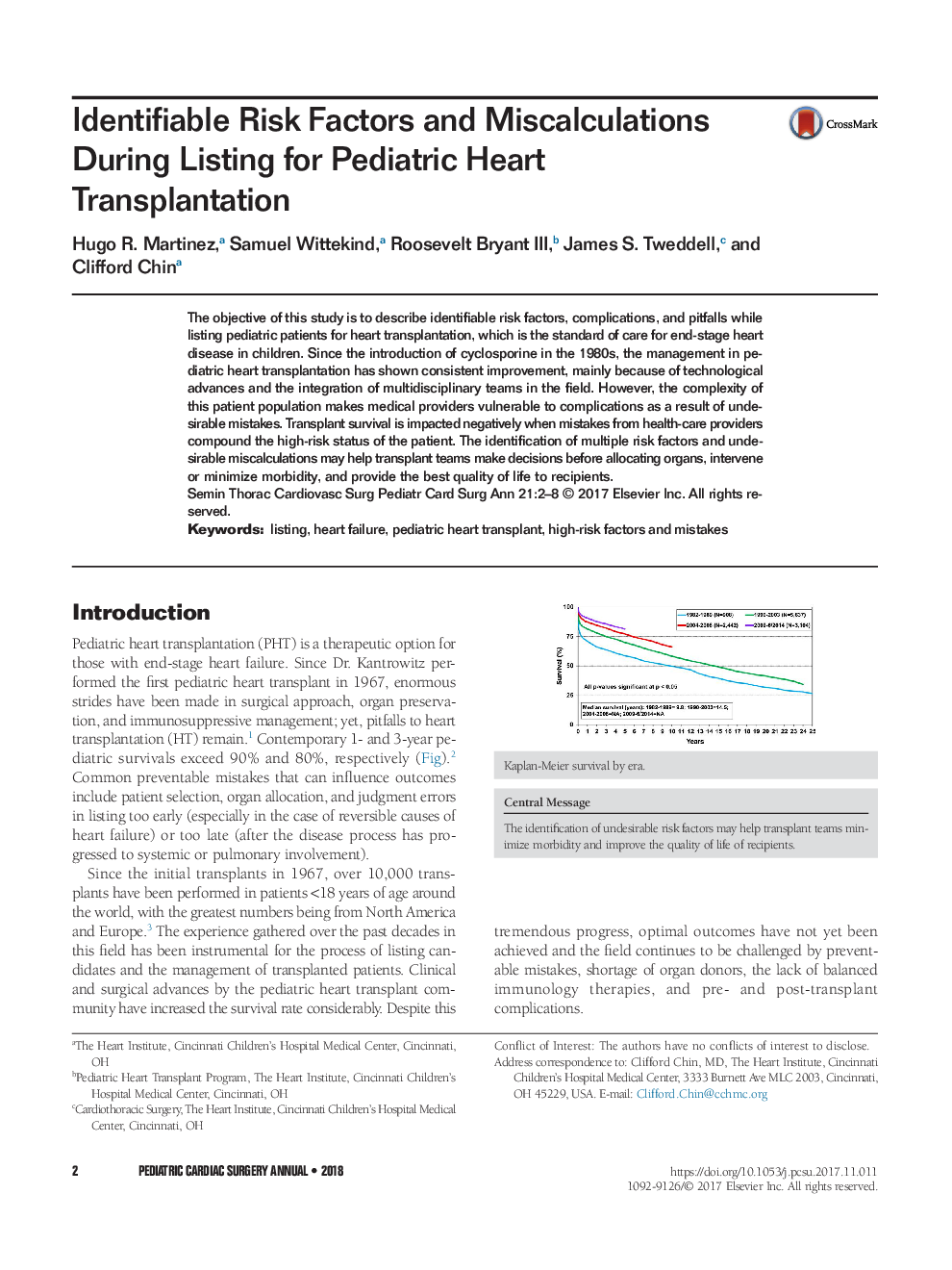| Article ID | Journal | Published Year | Pages | File Type |
|---|---|---|---|---|
| 8679207 | Seminars in Thoracic and Cardiovascular Surgery: Pediatric Cardiac Surgery Annual | 2018 | 7 Pages |
Abstract
The objective of this study is to describe identifiable risk factors, complications, and pitfalls while listing pediatric patients for heart transplantation, which is the standard of care for end-stage heart disease in children. Since the introduction of cyclosporine in the 1980s, the management in pediatric heart transplantation has shown consistent improvement, mainly because of technological advances and the integration of multidisciplinary teams in the field. However, the complexity of this patient population makes medical providers vulnerable to complications as a result of undesirable mistakes. Transplant survival is impacted negatively when mistakes from health-care providers compound the high-risk status of the patient. The identification of multiple risk factors and undesirable miscalculations may help transplant teams make decisions before allocating organs, intervene or minimize morbidity, and provide the best quality of life to recipients.
Related Topics
Health Sciences
Medicine and Dentistry
Cardiology and Cardiovascular Medicine
Authors
Hugo R. Martinez, Samuel Wittekind, Roosevelt III, James S. Tweddell, Clifford Chin,
